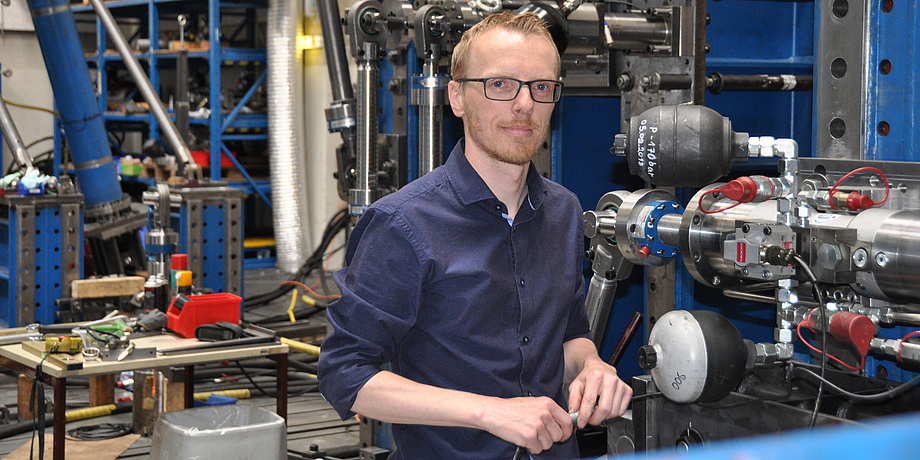News+Stories: Why is the idea of lightweight construction for railed vehicles so important?
Peter Brunnhofer: The interplay between the vehicle and the rails in railway transport is much more important than with cars on a road. Here it’s about steel on steel instead of inflated tyres on asphalt. Railed vehicles can place a heavy load on the track. The trend in our field is not to look at the individual parts of the system – such as the railed vehicle and the track system – in an isolated way, but rather as a whole system. In the past, a great deal of attention was paid to the acquisition costs. Today, however, the focus is much more on the entire life cycle or the total costs of ownership. In short, if you choose the wrong vehicle when buying, you will have very high costs in operation. Incorrectly designed vehicles can severely damage the rail network.
Are there any other trends in railways?
Brunnhofer: Yes. There is an increasing move away from planned maintenance. This means that certain parts are replaced after certain intervals, such as a certain mileage or duration of use – regardless of whether there is damage or fatigue. The trend is towards monitoring the individual components and predicting necessary maintenance. In this way, maintenance can be carried out efficiently, flexibly and cost-effectively.
This is exactly the direction in which we are moving in our research. Lightweight construction allows us to move less unsprung mass on the track. There are two advantages for this. On the one hand, the load on the rail is reduced and on the other hand, more people or freight can be transported.
And we are working on methods for the targeted monitoring of components in order to design maintenance intervals efficiently.
Can you give an example?
Brunnhofer: We have been working very well with Siemens Mobility in Graz for years. Together we’ve come up with a very exciting patent: a lightweight wheel-set axle. The high accelerations that railed vehicles have make for high stress. The lightweight wheel-set axle is not made of solid material as usual, but of a thin-walled tube with a larger diameter. This made it possible to reduce the weight significantly.
But this wheel-set axle is not only light, it also monitors itself. The wheel-set axles are checked for cracks at regular intervals. This is so important because it is a safety-critical component. Failure can lead to serious consequences. The vehicle must be taken out of circulation for the duration of the inspection. This lightweight wheel-set axle is now built in such a way that continuous inspection is possible during operation. The hollow axle is provided with an overpressure that is continuously checked by means of sensors. If the pressure drops, then we know there is a crack. This crack is not yet safety-critical, so the vehicle can still drive to the next workshop without any problems.
The railway is not known as a classic innovation driver. Or is this impression deceptive?
Brunnhofer: The railway is not considered a classic innovation driver or a classic application area for lightweight construction – but unjustly so. One thinks here primarily of materials such as carbon, titanium, plastics or similar materials. But in the rarest of cases it is steel. Lightweight design is about minimizing weight under given functional and economic constraints, while ensuring system reliability over the entire service life. A chassis is classically in daily use for between 30 and 40 years. With a car, after this time we already speak of a classic car. Under the given circumstances, steel is therefore still the first choice for structural components in the bogie. And here, too, innovations are still possible.
A big difference to the car market, for example, is that there are no prototype vehicles in the development process. That is why the so-called digital twin is very important – in other words, digital imaging. It is essential, but also very costly, to assess whether a material can cope with the long service life and high loads of a railed vehicle. But that is also a strength of our institute.
What infrastructure does the institute have to test components?
Brunnhofer: At the large test field of our institute in Inffeldgasse, we work with servo-hydraulic cylinders that make fatigue tests possible on a large scale. Long-term tests of over 10 million load cycles are carried out here, as well as material characterization and model validation. With our systems, we can test any component from a small sample to a complete component – such as an entire bogie. Every test is unique in some way, which is why we build special test stands that can best serve the requirements of the individual tests. The challenge is to generate realistic loads in a short time that lead to realistic damage.
In addition, we have two wheel-set axle test stands, where the lightweight wheel-set axle was also tested for operational stability, and several small test stands. And more recently, we have been operating a completely new test stand for railed vehicles, with which we can test brakes and also their interaction with the brake system.
Dieses Forschungsprojekt ist im Field of Expertise „Mobility & Production“ verankert, einem von fünf strategischen Schwerpunktfeldern der TU Graz.
Mehr Forschungsnews finden Sie auf Planet research. Monatliche Updates aus der Welt der Wissenschaft an der TU Graz erhalten Sie über den Forschungsnewsletter TU Graz research monthly.

